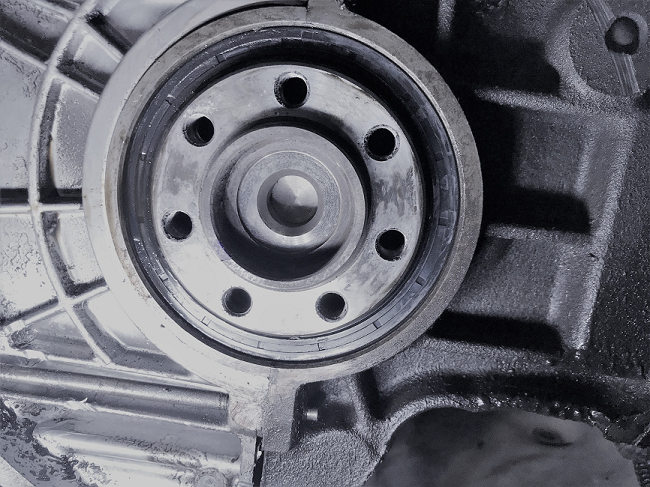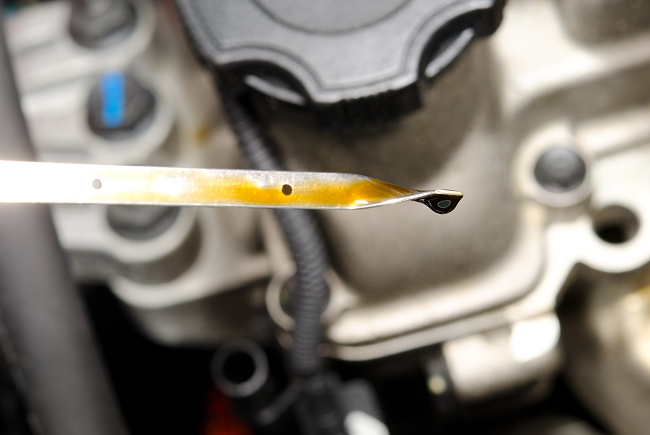
Engine oil fulfills important functions. It creates a film on the surface of parts to prevent their wear, removes heat from moving parts and protects against corrosion. In addition, it cleans the engine. Lack of lubricant is dangerous for the engine. In this article we take a look at how leaks can occur, how to identify a defect and whether a car with an oil leak is safe to drive.
You might also be interested in: The best motor oil tests & Comparison
Contents
Why the car is losing oil
The The most common reasons why a car leaks oil are:
worn gaskets
Gaskets and O-rings are mostly made of rubber, which loses its durability and elasticity over time. In the end, the car starts to lose oil in the area of the mating surfaces, which are sealed by these elements.

Solution:
- Take the valve cover in Illusion. Lubricant stains where it contacts the cylinder head indicate a worn gasket. Replace them.
- Check the connection between the engine block and the cylinder head: a leak at this point can occur due to engine overheating, which leads to deformation of the engine block and cylinder head and deterioration of the gasket.
- Unscrew the coolant reservoir cap and check for traces of lubricant inside. Their presence also indicates a loss of tightness between the engine block and cylinder head.
- Check the oil filler neck. White foam on it is an indication that coolant is entering the lubrication system.
- Replace the cylinder head gasket. Take your car to a workshop for this, as the repair will probably not be limited to installing a new gasket: grinding the mating surfaces will also be necessary.
- Check the attachment of the ignition distributor. If a leak is evident, replace the oil seal or o-ring.
- Inspect the oil filter. If your car is leaking oil from the gasket, try to fix the problem by tightening the part with more force. If that doesn't help, replace the component.
- Check the crankshaft oil seals. Their failure can be caused by increased gas pressure in the crankcase or by incorrect installation. Install new parts. Note: In the course of this work you will have to disassemble the engine. It is therefore advisable to replace the camshaft oil seals at the same time.

Increased pressure in the system
Due to the accumulation of impurities, the throughput capacity of individual sections of the lubrication system is reduced, which leads to local pressure increases. The latter can also lead to clogging of the crankcase ventilation components, which leads to the ingress of exhaust gases into the lubrication system. This causes oil to be forced out of the seals and joints. Sometimes the problem is caused by too much lubricant and its high viscosity.
Solution:
- Measure the pressure in the lubrication system with a manometer. If this is higher than normal, continue to the next step.
- Remember when was the last time you have done an oil change. If the vehicle has traveled approximately 15,000 km since then, replace the lubricant and oil filter.
- Make sure you use a product with the manufacturer's recommended viscosity. If this is higher than normal, this can lead to increased pressure.
- Flush the lubrication system. To do this, pour a special additive into the oil filler neck, start the engine and let it idle for a while. After that, drain the liquid, replace the filter and fill in new oil.
- Check the oil level. If it exceeds the prescribed level, remove the excess with special suction devices or drain with the drain plug.
- Remove and inspect the pressure relief valve. Clean dirt from it. Check that the locking device moves freely. If it binds, replace the valve or the entire pump assembly.
- Warm up the engine to operating temperature. Remove the oil cap and seal the opening with your hand. Ask an assistant to press the accelerator pedal several times to increase the engine speed to 2000-2500 rpm. If you notice an increase in pressure in the system when you start the engine, then the crankcase ventilation system is defective. Take your car to a garage to have it repaired. The specialists will clean the components and, if necessary, replace the PCV valve and oil catch tank.

Error during installation
Improper tightening of bolts and incorrect tightening sequence can cause deformation or cracks cause in the seal. In addition, the seal can be destroyed by the use of sealants or adhesives.
Solution:
Replace the seals. Observe the tightening torques specified by the manufacturer. Screw in the fasteners using the pattern given in the vehicle's service manual. Use special tools when installing oil seals.
Mechanical damage
These can be caused by the ingress of foreign objects or hitting an obstacle, to which the oil pan is particularly vulnerable.

Solution:
- Cold weld to seal the crack.
- Take your car to a workshop to to have the oil pan welded.
- Install an oil pan guard. If you often drive off-road or on roads in poor condition, this protection will help you avoid many problems.
Loose Fastenings
Due to driving on roads in poor condition and excessive vibration due to, for example, worn suspension components, some fasteners may become loose. A car often loses oil through these.
Solution:
Retighten clamps and fasteners. Replace if necessary.
Why a car that is losing oil is dangerous
Due to the lack of lubricant, wear on the mating surfaces increases. First of all, this negatively affects the condition of the valve stem seals, which only makes the problem worse. The oil, of which there is already not enough, penetrates into the engine cylinders and burns there. Further lack of lubrication leads to destruction and jamming of camshafts, crankshafts and engine pistons. In some cases, connecting rods break due to overheating.
Additionally, when your car loses oil, the engine case becomes dirty and dirt collects on it. This adversely affects the process of heat exchange, increases the load on the engine and can lead to its overheating. Lubricant can also accumulate in the spark plugs, causing the ignition system to malfunction. In addition, oil can degrade the insulation of underhood wires and clutch elements. It can also soften rubber bearings and seals and affect plastic parts.
Can I drive my car if it is losing oil?
If the leak is significant, for example if the oil pan has been punctured, you must stop using the car. It is best to use a towing service. In case of minor damage, you can try to repair it with sealant or cold weld. Keep an eye on the oil level on the way to the workshop. If it drops, top up to keep engine parts from starving of oil.

Is it possible that my car will not start because of an oil leak?Most of the time, an oil leak has no effect on starting the engine. However, in some cases, for example if the car is equipped with an oil level sensor and the level has reached a critical minimum, the electronic control unit may prevent the engine from starting.
Conclusion
The lifespan of an engine is directly related to the level of lubricant. Therefore, all leaks are dangerous. They should be fixed as soon as they are discovered. In fact, repairing a car that is losing oil is always cheaper than overhauling or replacing the engine.
